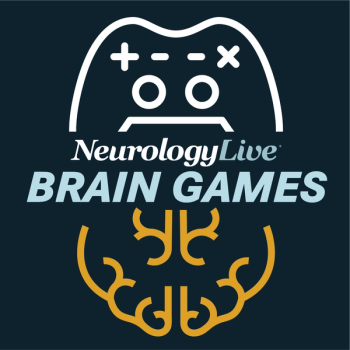
Setting Realistic Goals for Long-Standing Spinal Muscular Atrophy

This episode explores treatment considerations for patients already living with SMA, emphasizing individualized goals, medical complexity, and the value of subtle clinical improvements.
Episodes in this series

Spinal muscular atrophy (SMA) is an autosomal recessive disorder caused by mutations in both copies of the SMN1 gene on chromosome 5q, occurring in about 1 in 15,000 live births. In the U.S., carrier rates vary by ethnicity, from 1 in 47 among White individuals to 1 in 72 among African Americans, with detection rates of 94.8% and 70.5%, respectively. SMA leads to the dysfunction and irreversible loss of alpha motor neurons in the spinal cord and brainstem, resulting in progressive muscle weakness and atrophy.
Earlier this year, Cure SMA, an advocacy group dedicated to advancing the care of patients with SMA, put out a new best practices guideline on decision-making between healthcare providers (HCP) and patients and caregivers in North American and Western Europe. To better translate the latest updates, NeurologyLive® convened study authors Diana Bharucha-Goebel, MD, a clinical neurophysiologist at Children’s National, and Bakri Elsheikh, MBBS, FRCP, a professor of neurology at The Ohio State University Wexner Medical Center.
In episode 3, Bharucha-Goebel and Elsheikh examine how treatment decisions differ for patients with long-standing or adult-onset SMA. They highlight the need to assess coexisting medical complications, patient preferences, and logistical factors that can affect therapy delivery. The discussion emphasizes setting realistic goals—such as stabilization or slowed decline—as valid outcomes, while also acknowledging meaningful but often unmeasured improvements like reduced fatigue or fewer hospitalizations. The duo also touch on how these insights shape communication with families and support policy decisions around treatment authorization.
Transcript edited for clarity. To visit the 2025 Cure SMA Update in Best Practices,
Marco Meglio: Let’s talk a little bit about how this differs for patients who are not newly diagnosed with SMA. How do we approach those who may have had SMA for several years or are into adulthood, now that we do have a few approved therapeutics? And to that same point, some patients do go undiagnosed for a while. So, talk a little about managing those who’ve been living with SMA for some time.
Diana Bharucha-Goebel, MD: It’s really important to think about the whole picture—something I alluded to before. What is the current medical status of that individual? Are there coexisting complications related to SMA? For example, is there significant scoliosis? Is there respiratory insufficiency? How does that impact the mode or type of treatment in terms of how it’s delivered?
With intrathecal dosing, for example, if we’re talking about more complex spine anatomy, what does that mean for recurring intrathecal administration of an SMN-dependent therapy? Does that involve regular lumbar punctures? Does it require using interventional radiology services to gain consistent access? If it’s a child who needs sedation—and they also have respiratory insufficiency—how do we factor in the risks of recurring sedated or anesthetic procedures?
We also think about baseline labs. For instance, if there's an elevation in liver enzymes or GGT levels, does that sway you toward one therapy over another, or at least influence how you're going to monitor them? Again, we’re looking at what works best for the individual based on their medical status, home life, and treatment preferences. What’s realistic and safe for them? It’s not a one-size-fits-all approach.
Bakri Elsheikh, MBBS, FRCP: Exactly. And another point to make is that the recommendations in this document aren’t just for healthcare providers and patients—they’re also aimed at policymakers and insurers. These are based on the best evidence available.
For individuals with long-standing disease—like Diana said—they often have more complex clinical variability. In these cases, we need to ensure there are realistic treatment expectations. Unlike in infants, where we might see dramatic improvements, in older individuals, the goal may be to stabilize the disease or slow its progression. And we need to treat that as a valid and meaningful outcome. That point had very high consensus among the group.
Diana Bharucha-Goebel, MD: Yes—and to add to that, it’s really important to consider what we’re asking of patients and families. For older individuals who already have symptomatic SMA at the time of treatment initiation, we might not see large shifts on standardized clinic scores. But stability in and of itself is meaningful. Even if a scale doesn’t change, are there improvements in things like fatigue? Are daily activities easier? Are there fewer hospitalizations for pneumonia?
Some benefits aren’t always fully captured by the scales we use, but they’re still clinically meaningful. These are the kinds of things we need to consider when we counsel patients, review their follow-up progress, and make decisions about continuing therapy—including justifying treatment authorizations.
Bakri Elsheikh, MBBS, FRCP: Absolutely. I like that analogy you gave—if a patient tells you they don’t feel as worn down after an illness as they used to, that matters. It may not register on a formal scale, but it’s a real, measurable improvement in their quality of life.
Newsletter
Keep your finger on the pulse of neurology—subscribe to NeurologyLive for expert interviews, new data, and breakthrough treatment updates.
































